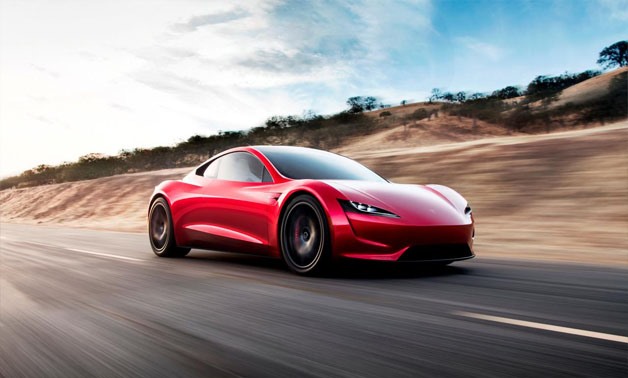
Tesla Roadster 2 is shown in this undated handout photo, during a presentation in Hawthorne, California, U.S., November 16, 2017 - Tesla/Handout via REUTERS
Reuters - 18 November 2017: Tesla Inc may have to ask creditors and shareholders for more capital to fund development of an electric semi truck, a new roadster and accelerated production of a high-volume electric sedan, analysts said on Friday.
Musk unveiled one flashy strategy for generating cash during the launch event Thursday for the Semi truck, surprising the audience with a prototype of a new generation of the Tesla Roadster. Musk promised the Roadster will be the fastest production car available. The first 1,000 cars will cost $250,000 each, paid in full upfront, with later models starting at $200,000.
Those deposits would put $250 million into Tesla’s cash drawer today for a car that is likely to go into production in 2020.
Musk did not offer details about how Tesla would generate additional funds to deliver the semi truck and the roadster, and overcome production problems that have hobbled production of the company’s high-volume sedan, the Model 3.
Tesla spent $1.1 billion on its auto business in the third quarter, and expects expenses of $1 billion in the current one. It had about $3.5 billion in cash and cash equivalents as of Sept. 30.
At the current cash-burn rate, it would likely be down to about $1 billion in cash by the end of the first quarter.
“In essence, all last night’s event did was add to Elon Musk’s shopping list of things he needs to spend money on at a time when the company is having difficulty making its base vehicle (Model 3),” said Cowen analyst Jeffrey Osborne.
Despite such concerns, Tesla shares were up about 1.4 percent at mid-day. While the shares are up more than 40 percent this year, they have fallen 20 percent from record highs in mid-September.
Shares in heavy truck diesel engine maker Cummins Inc (CMI.N) fell 4.7 percent, and shares in Class-8 truck makers Paccar Inc (PCAR.O) and Navistar International Corp (NAV.N) also fell.
Tesla this month pushed back its target for volume production on the Model 3 sedan - widely seen as crucial to the company’s long-term future - by about three months to fix production bottlenecks.
Osborne said Tesla’s cumulative capex announcements now exceed $15 billion to $20 billion over the next few years.
Some analysts fear the trucks will be an expensive distraction for the company, which has never posted an annual profit and is in self-described “manufacturing hell” related to the $35,000 Model 3 sedan.
Jefferies analyst Philippe Houchois estimated that Tesla would need to raise $2.5 billion to $3 billion to keep production running smoothly.
“Longer term, we continue to think the capital intensity of the business model will keep returns below best-in-class auto(makers),” Houchois said in a research note.
Tesla’s last debt sale in August was well-received in a hot bond market, allowing the company to increase the offering to $1.8 billion from $1.5 billion. But the bond has underperformed in the secondary market, suggesting it could be more challenging for Tesla to tap the high-yield debt market again so soon.
“They are losing $1.5 billion a quarter and the bond is unsecured so it is not of interest to me,” said Jim Brilliant, chief investment officer at Century Management.


Comments
Leave a Comment